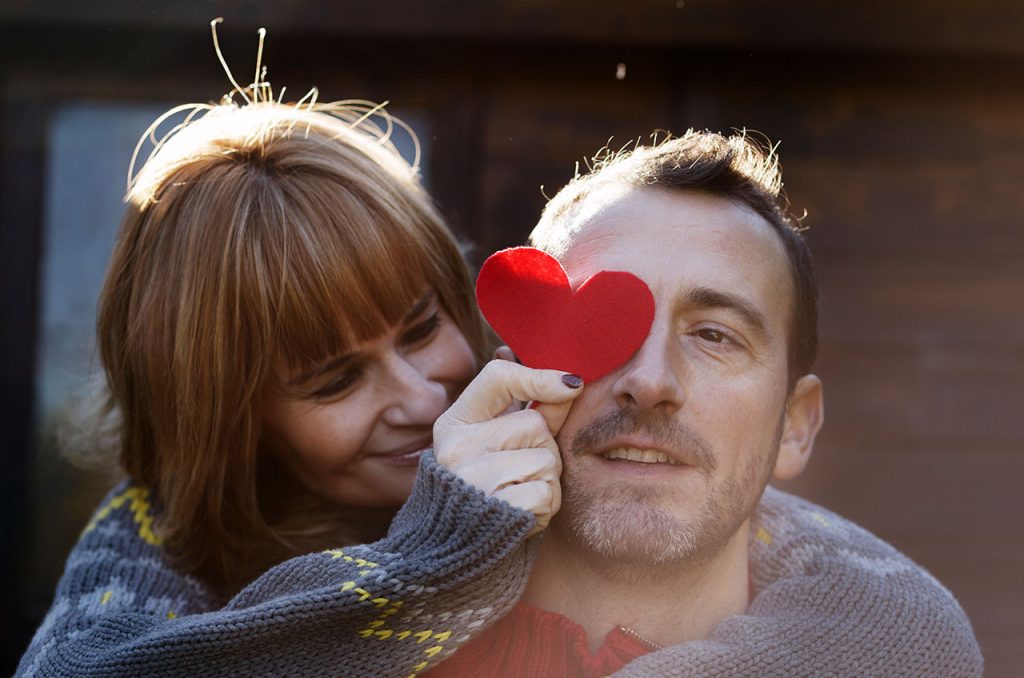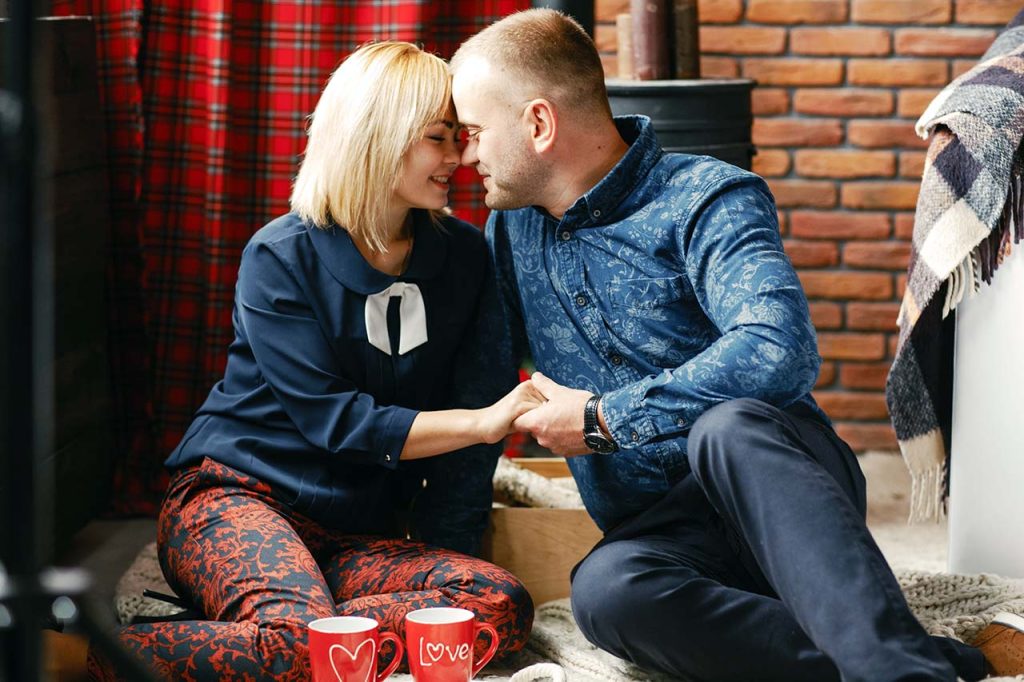In recent years, attachment styles have become better known and have gradually emerged as a new perspective for understanding intimate relationships. “No wonder we’re always chasing each other in our relationships—one anxious and the other avoidant.” Many people refer to “bad boys/girls,” but they may simply have insecure attachment styles.
Meanwhile, “secure-type partners” have become the object of everyone’s desire.
They can rely on others while maintaining independence and draw closer to or distance themselves from others as needed. They can even create a buffer effect, helping non-secure partners improve their relationship satisfaction and transition to a more secure attachment style.
However, many people are confused. “I’ve heard of them, but I’ve never met one. How do I identify a secure-type partner?” What does ‘secure’ really mean?” “I’m anxious and want to become secure—what should I do?”
In this article, we’ll discuss the seven common characteristics of secure attachment.

01
The most prominent characteristic is a stable state in the relationship.
Compared to insecure attachment patterns, the most prominent characteristic of secure attachment is a “stable state.”
Those with secure attachment won’t suddenly disappear, fluctuate between closeness and distance, or become overly clingy. They can accept that relationships have flexibility, and neither excessive intimacy nor excessive distance is likely to trigger their “alarm.”
They are also less likely to internalize their partner’s “projections”—meaning, when their partner attacks or criticizes them, they are less likely to become caught up in such evaluations and escalate the conflict. When their partner’s world is hit by a “storm,” they remain standing like a tree, unwilling to be easily destroyed.
This stems from their relatively secure sense of safety in both the relationship and themselves. Benedek (1938) refers to this as a “confident relationship,” Klein (1948) as “the internalization of a good object,” and Erikson (1950) as “basic trust.”
Thus, secure attachment is often directly related to mental health.
02
Providing “good enough” emotional support
Many criticize insecure attachment for failing to provide adequate emotional support. When needed, those with insecure attachment may withdraw or become overwhelmed.
However, secure attachment does not mean that partners can fully meet one’s needs. In reality, they can only offer “good enough” emotional support.
The concept of “good enough” originated with Winnicott and means that caregivers don’t need to be perfect—scoring 60 out of 100 is sufficient to raise a basically secure and healthy child.
In the context of intimate relationships, “good enough” emotional support might mean:
- Reliable, safe, and consistent (similar to the “stability” mentioned earlier);
- Being sufficiently attuned to your partner’s needs and willing to meet them rather than ignoring them.
- Being able to discuss each other’s needs and communicate about those that cannot be met.
Having a “good enough” caregiver during childhood is the foundation for developing secure attachment. Numerous studies have found that adults’ secure attachment is influenced by their relationships with caregivers during childhood (Brennan et al., 1998). Those who were treated well in the past are now able to love others well.
03
A partner is not the only source of intimacy and emotion.
Secure lovers know this well. They usually have healthy interpersonal relationships outside of their romantic relationship. They do not rely on their partner as their only source of intimacy and emotion.
As a result, the partner does not feel pressured. “They need you, but not that much.”
This improves the quality of the intimate relationship. Research shows that people with “significant others” have more opportunities for self-expansion. This injects novelty and vitality into the relationship and promotes long-term satisfaction (Tsapelas, 2009).
Conversely, when a partner is the sole source of intimacy and emotional support, the relationship becomes fragile. It may be unable to withstand any fluctuations, and when it ends, the impact can be devastating. “You are the only person who matters to them in the world” is not a sweet declaration of love, but rather a dangerous sign.
04
Serving as a “container” to regulate the emotions of both partners
The ability to regulate emotions is another prominent characteristic of individuals with secure attachment. They can effectively manage their own emotions and also serve as a “container” to provide emotional regulation for their partners.
For example:
- They are highly attuned to their own emotions and those of their partners. As a result, partners do not need to escalate their emotions, such as by throwing tantrums or engaging in cold wars, to gain their attention.
- They can help their partners validate and accept their emotions.
- They do not view negative emotions as bad, but rather as an opportunity for intimacy.
- They better understand negative emotions and try to resolve emotional issues with their partners.
On the other hand, they also expect their partner to help them regulate their emotions. This way, they can express their feelings appropriately instead of acting out in destructive ways.
Where does this ability come from? Emotional regulation is not something one person can do alone. It develops within relationships and often requires interaction with others. As children, we gradually understand our emotions and learn to manage them through our parents’ validation, affirmation, and involvement.
Without experiencing such a “container,” people may have difficulty regulating their emotions and may have difficulty becoming a “container” for others.

05
Being able to let go of a partner with ease
In attachment theory, there is a concept called the “secure base.” Imagine this scene:
After a child learns to walk, the mother stays in one place while the child walks toward a nearby toy. The child occasionally looks back to confirm that the mother is still there, which reassures the child. Because the child knows the mother is nearby and will appear when needed, he or she can confidently explore the world.
At this point, the mother serves as the child’s “secure base.”
Similarly, partners in adult intimate relationships can become new “secure bases.” Securely attached individuals trust in the existence of this secure base, so they can easily leave their partner to do their own thing without constantly looking back to confirm their partner’s presence. Likewise, when their partner leaves, they don’t worry because they know their partner will return. They strongly encourage and welcome their partner to explore their own world.
Sometimes they cuddle together, feeling close. Other times, they go their separate ways, playing freely. A good relationship empowers people to step away from it.
If the “safe base” is unreliable, people have a hard time leaving. For example, if a child turns around and their mother is gone, they will start crying and searching for her. Even tempting toys won’t be able to distract them.
06
Maintain flexible boundaries — not too rigid, but not too loose, either.
Boundaries are an important part of any relationship and fundamental to self-care. However, due to the intimate and emotional nature of relationships, many people do not know how to handle boundaries.
Let’s take a look at the three common types of boundaries, which correspond to different attachment styles.
1 Loose boundaries, which are common among anxious lovers:
- Over-sharing
- Excessive mutual dependence and emotional entanglement (lack of emotional separation from others).
- Difficulty saying “no”; pleasing others
- Feeling overwhelmed when rejected
- Easily accepting abuse
2. Rigid boundaries are common in avoidant lovers.
- Rarely sharing
- Difficulty exposing vulnerability or expressing needs
- High expectations of others
- Tendency to shut others out and feel like there’s a wall around the heart
3. Healthy boundaries are commonly seen in secure-type lovers.
- A clear sense of values and defined boundaries, as well as respect for others’ boundaries
- Ability to listen to inner voice and trust feelings
- Share appropriately with others.
- Show vulnerability appropriately
- Can calmly refuse others without hostility and can also calmly accept being refused
You may have noticed that, for secure-type lovers, the key to boundaries lies in flexibility. They cannot be too loose nor too rigid. They have their own principles, yet they can also respect and understand the differences of others. Healthy boundaries allow them to balance personal needs with relationships.
07
Believe that you deserve love and choose the “right person.”
While most people in real life aren’t this extreme, there are still some signs that someone is unable to build a healthy relationship. These signs include being moody, avoiding things, being unfaithful, and having violent tendencies. Securely attached people lose interest when they meet someone like this. They know they want and deserve to be loved, and they believe there are many potential partners who will accept their intimacy and meet their needs.
In The Reconstruction of Relationships, the author interviewed many people with different attachment styles. One secure-attached interviewee, Tanya (28, female), shared her criteria for choosing a partner:
“When dating men, I am only interested in those who don’t play games—that’s my basic principle. After our dates, those men would call me the next day, and at the latest, they would contact me by evening. In return, I would make my intentions clear from the start. In my entire life, I have only encountered two men who contacted me several days later, and I immediately excluded them from consideration.”
As you may have noticed, Tanya does not waste time on men who do not sufficiently respond to her need for intimacy. A crucial aspect of her dating principles is that she believes people who don’t respect her or lack the capacity to adequately respond in a relationship aren’t worth her time.
If Tanya were an anxious attachment type, she’d likely attribute the other person’s lack of contact to her own poor dating performance. She would scrutinize her behavior, doubt herself constantly, and repeatedly give chances to the wrong people.
By now, you may be feeling hopeful about secure-style partners or discouraged about yourself.
In fact, attachment styles are not something we can choose. They are largely based on past relationship patterns. Negative relationship experiences often lead to insecure attachment. Building a healthy, secure relationship at this point might not be easy. People often need many positive experiences to gradually adjust their understanding of the world (Gillath et al., 2008). However, change is still possible.
However, change is still possible.
Studies have shown that individuals who develop healthy relationships with new attachment figures, such as close friends, partners, therapists, or mentors, may exhibit secure attachment styles (Saunders et al., 2011). Many contemporary couple therapy approaches, such as Emotion-Focused Therapy (EFT) (Johnson, 2019), help couples experience secure attachment, thereby fostering healthier relationships.
May you have the opportunity to be treated well and to love well.

